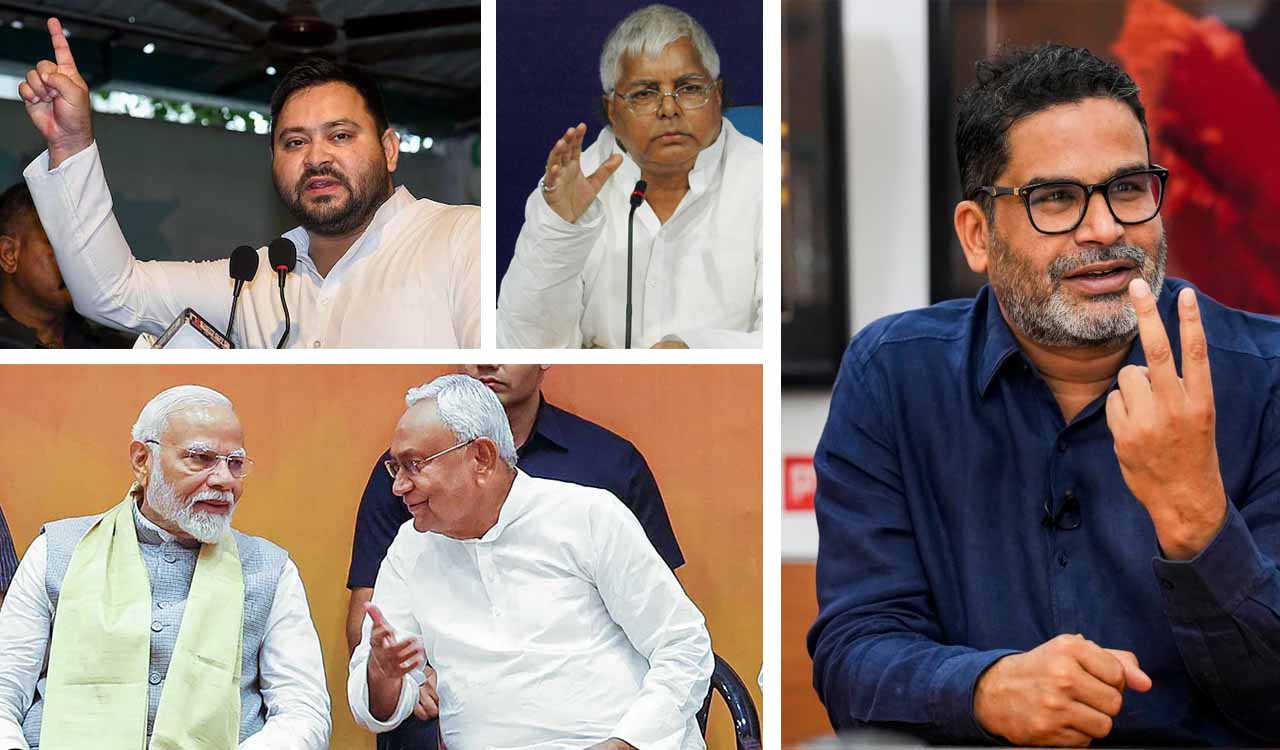Bihar’s political script for 2025 seems to be writing itself — and the ending increasingly appears to favour the NDA. While confusion and friction continue to dominate the Congress-led INDI alliance, the Nitish Kumar–Narendra Modi combine has already moved into campaign overdrive with clarity, coordination, and confidence.
The contrast could not be starker. On one side, the JD(U) and BJP — partners in power and pragmatism — have finalized their seat-sharing deal well in advance, splitting Bihar’s 243 Assembly seats evenly at 101 each and leaving 29 for Chirag Paswan’s LJP. Candidates have been named, nominations filed, and campaign machinery oiled. On the other hand, the INDIA bloc’s house looks anything but in order.
The Rashtriya Janata Dal (RJD), led by Tejashwi Yadav, and the Congress have been squabbling over seats and arithmetic. The Congress, with a meagre 5 percent vote share, was reportedly adamant about contesting 15–20 seats but went ahead and announced 60 candidates — much to the irritation of its senior partner, the RJD. The uneasy truce reached between the two appears to be a reluctant acceptance of “friendly fights” in several constituencies — a euphemism for open rebellion. In politics, such “friendliness” rarely ends well.
What makes this election even more curious is the polling paradox: despite Nitish Kumar’s unmatched administrative record, some surveys show Tejashwi Yadav ahead as the preferred Chief Ministerial face. Tejashwi’s appeal among the youth and his ability to position himself as the “anti-establishment” candidate have given him momentum, even though his party continues to bear the heavy baggage of corruption scandals linked to his father, Lalu Prasad Yadav, and himself.
Nitish Kumar, on the other hand, remains Bihar’s perennial survivor — a “Palturam” to critics, but a political pragmatist to supporters who credit him for Bihar’s infrastructure revival, women’s empowerment schemes, and steady governance. In a state long haunted by caste equations and political volatility, his stability remains his biggest asset.
The latest Vote Vibe survey captures the mood well: the NDA leads with a narrow but significant edge — 41.3% to the INDIA bloc’s 39.7%. Prashant Kishor’s Jan Suraaj trails at 9%, followed by the BSP at 2.5% and AIMIM at 1.7%.
Crucially, the NDA’s advantage stems from its intact core voter base and a string of welfare announcements targeting women, farmers, and backward classes. Among women voters, the NDA enjoys a 6% lead — a demographic that has repeatedly backed Nitish Kumar’s social welfare policies. The INDIA bloc, meanwhile, leads slightly among men and youth aged 18–34, while voters aged 35 and above largely favour the NDA.

The caste calculus continues to shape Bihar’s politics. The Mahagathbandhan retains dominance among Muslim-Yadav and Scheduled Caste voters, while Upper Castes, EBCs, and non-Yadav OBCs remain solidly behind the NDA. Dalit votes, excluding the Paswan community, appear to be split — a battleground that may determine several close contests.
Adding weight to the NDA’s campaign is Prime Minister Narendra Modi himself — whose towering national and global stature has become a decisive factor in every state election. His appeal, especially among first-time voters and women beneficiaries of central welfare schemes, gives the NDA a psychological edge.
With Nitish Kumar handling the local equations and Modi driving the national narrative, the NDA’s campaign has both structure and synergy. The INDIA bloc, by contrast, looks like a coalition still trying to decide who’s in charge.
If the surveys hold, the NDA’s path to another term in Patna looks increasingly smooth, though Bihar’s politics has a history of springing surprises. The real test will lie in the voter turnout and the alliances’ ability to keep their fragmented bases intact.
For now, though, one thing is clear — in a state where politics often resembles a game of musical chairs, Nitish Kumar and Narendra Modi seem to have already reserved their seats.




